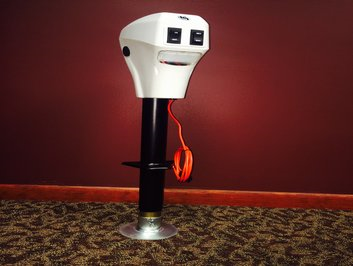We use actuators on a daily basis. Almost all of our devices utilize some sort of an actuator. Linear actuators provide movement (push and pull motion) to other objects. The movement is in the linear plane, hence the actuators are known as linear actuators. Many factors affect the functioning of a linear actuator. Here, we will discuss the three main factors: life rating, fatigue life, and power options.
Factor 1: Life Rating
Manufacturers perform several tests to determine the functional capacity of the actuator. This will factor in the force, speed, loading, temperature, and range of motion, position, and other aspects, to provide the maximum allowable ratings of the actuator. When using an actuator, the motion should not exceed the life rating. This keeps the actuator from being overworked. You will need to match up your application requirements to the life rating of the actuator provided by the manufacturer
Factor 2: Fatigue Life Analysis (Load Capacity Analysis)
The fatigue life analysis is carried out to determine the maximum load that an actuator and its components can bear. In this analysis, all rolling components like bearings and screws (ball bearings, ball screws, etc.) are taken into consideration. They are tested to determine the number of hours they can be in operation, maximum travel distance, or revolutions. With fatigue life analysis of the actuator, you can determine its usage in your application.
Factor 3: Linear Actuators Driving Force
The manner in which the actuator is powered has a huge effect on its functionality. Hence, it is important to understand how different types of linear actuators are powered:
- Mechanical energy can be used to power some linear actuators. This is found in levers of various devices, where a lever is used to move different components inside the machine to produce the desired result.
- In some machines, compressed air is used to power pistons, which in turn cause other objects to move.
- Electromagnetic energy produced by solenoid coils is used to make many objects move. It is used to move objects from a remote location, like locking and unlocking car doors, turning on switches, etc.
The market is flooded with a variety of linear actuators. Some provide you with torque, some with force, some with combinations of motion and position, etc. The right choice of actuator will depend on your application and the environment.

